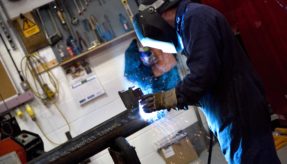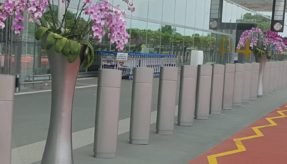
Gavin Hepburn, Sales and Marketing Director at ATG Access, the world’s leading innovator of road blocker, bollard and vehicle barrier systems, tells MOD DCB about the variety of preventative measures authorities can take to protect our cities and way of life from terrorists employing hostile vehicles.
Countries across the world are undeniably on high alert given the increased number of terror attacks that have stolen hundreds of innocent lives over the past few years. Every year since 2015, the number of attacks has risen by 25%, and in 2015 alone, 211 incidents took place in Europe.
Protecting the public against these atrocious acts of violence is the number one priority for authorities around the globe.
But, the type of threat we’re witnessing is evolving, and this is making it even more difficult for security forces to keep our cities safe. Hostile vehicles are now becoming the weapon of choice for terrorists – they’re easy to rent, they can inflict large amounts of damage in just a few minutes and, unlike explosive devices, they require little skill to operate.
With these attacks often sporadic and difficult to predict, how can governments prevent hostile vehicles from making contact with their targets?
Deploy impact-tested barriers
One of the most effective ways to stop vehicles, travelling at high speed, from colliding with pedestrians is to erect strong, sturdy barriers around public spaces. Following the attack last year in London on Westminster Bridge, concrete barriers have now been installed around the area. Other countries, such as Italy, have erected heavy-duty concrete barriers around famous landmarks to protect sites from possible vehicle attacks.
While concrete barriers provide protection against a vehicle ramming attack, it is important to note that their size and crude aesthetic appearance could make the public feel uncomfortable. Just their presence will likely remind the public of the severity of the current threat level. Large barriers can also be potentially dangerous for pedestrians and cyclists due to the narrowing of pathways to create space for the barriers to be installed. This could create bottlenecks of people all trying to push and shove to get past the barrier.
To avoid creating a fortress mentality, there are a range of Hostile Vehicle Mitigation (HVM) barriers that have been specifically designed to fit in with their surroundings, and also offer the highest level of protection again ramming attacks. These solutions can be retrofitted around existing infrastructure to help them blend into the background and almost appear invisible.
Most importantly, these barriers are capable of withstanding the direct impact of large vehicles – there are even systems available that can handle the impact of a vehicle weighing up to 7500kg travelling at 32kph. And because of their modular, lightweight design, they can secure a road in just over 20 minutes using solely manpower – they can be deployed immediately with no need for heavy machinery or extensive road closures.
Install fixed or static bollards
Depending on the area’s design and security requirements, there are also a range of security bollards that can be used to protect against vehicle attacks on a permanent basis. These products can either be automatic, fixed or removable ‘lift out’. These types of security bollards are available in a variety of security ratings, shapes, sizes and finishes, meaning they can be designed to fit within the intended environment so as not to detract from a building’s façade or the beauty of an urban square.
When foundation depth is limited, there are high-security, static bollards available that have a unique shallow base. This not only minimises excavation disruption, but also lowers the cost and time needed for installation. Shallow foundation bases often come in a variety of different shapes, meaning that they can be selected to suit the surrounding area and can also be installed around corners and existing street furniture items if required.
Redesign roads to slow vehicles down
Aside from just erecting bollards and barriers to absorb the impact of a possible vehicle attack, there are ways to limit the speed that hostile trucks and lorries can accelerate to. It may seem like a less obvious solution, which would require a considerable amount of planning, but redesigning roads would prevent vehicles from building up enough speed before they reach pedestrian areas.
The key is to shorten long sections of road to force vehicles to slow down, rather than pick up speed. This could be by including tight bends and shortening the width of streets, but could also be achieved by adding in features such as roundabouts and chicanes.
Measures such as these have already been implemented outside Premier League football clubs to stop vehicles from travelling at high speed towards the sporting ground and its forecourt, where crowds of fans often gather during match days. This has also been done in quite a few areas across London, particularly following the attacks on Westminster and Borough Market.
At the moment, terrorist cells and individuals seem to be using the weapons that are easily accessible to inflict the greatest amount of damage – vehicles are ubiquitous, as are the cities where attackers live side by side with victims. While governments and authorities must avoid inciting panic or fear in the public – in effect, this would be letting the terrorists win – preventative measures do need to be taken to protect our cities and way of life. We must stand up to terror together.
For more information, visit: www.atgaccess.com
If you would like to join our community and read more articles like this then please click here.
ATG Access hostile vehicle attacks Hostile Vehicle Mitigation







